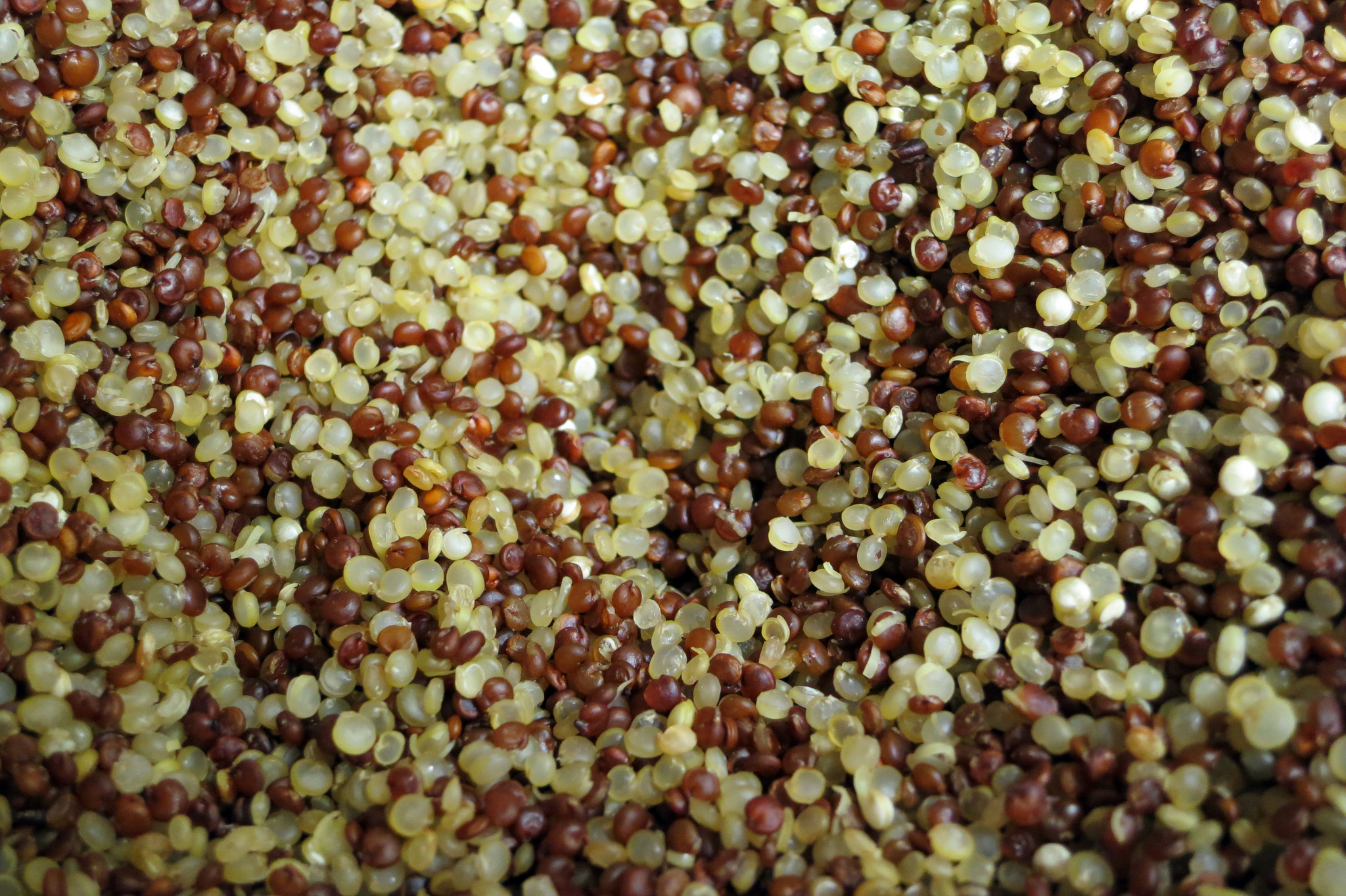Five years ago, most of us had probably never heard of quinoa. The first time I read (and mispronounced) the word was a couple years ago, as I scrolled through Pinterest looking for healthy recipes that I had never tried before. Back then, [kee-nwa] was just an unknown grain found only in some whole-food specialty stores, but it has now risen to stardom as one of those superfoods that anyone who says they know anything about health puts into their regular rotation of meals.
Today, quinoa is very trendy and is talked about like anything else in mainstream culture. Just like music trends start with local bands and then make it to the national radio, quinoa went from being an underground “foodie” grainmovement to a mainstream ingredient endorsed by popular chefs all over the country. Whether it was quinoa’s high nutritional value or quick rise to fame, people can’t seem to get enough of this little protein-packed grain. The problem is that the story behind quinoa is hidden from us back in its homeland, and westerners now have access to something that its original communities can no longer afford.
Bolivia is currently the world’s leading supplier of quinoa, but may be surpassed soon by Peru (whose exports increased from $15 million in 2010 to $83 million in 2013). The crop is rooted deep in the history of the poor communities of the Andes, named Chisaya Mama by the Inca, meaning “the mother of all grains.” The seed’s spiritual importance to the people of this region make the plant a valued part of their identity and their relationship with the world. These communities have been sustained by Mother Quinoa for centuries, and now we can find it in our microwavable meals at Safeway.

“Mama Quinoa”, an art piece made entirely out of quinoa grains, made for the Bolivian Pavilion at the World’s Fair in Milan. (Photo: Emma Berg/The Georgetown Voice)
One of quinoa’s biggest steps towards its rise in the global market was the year 2013 – dubbed the “International Year of Quinoa” by the United Nations. They recognized the crop’s potential contribution in the fight against world hunger— quinoa is the only plant food that contains all 10 essential amino acids for the human diet, is non-perishable, and whose protein content can substitute that of animal protein. This crop is chock-full of all the things our bodies need, and for those who are impoverished, it could be a sustaining food source.
Quinoa has been difficult to distribute, however, because it only grows naturally in the climate and terrain of the Andes Mountains. Currently, it can only be exported. In spite of the UN’s initiatives, the grains were not primarily distributed to the starving, but were exported to us: our foodies looking to create their next exotic meal, our health nuts on low carb diets, and our vegans looking for “environmentally friendly” alternatives to meat.
[pullquote align=”right” cite=”” link=”” color=”” class=”” size=””]In spite of the UN’s initiatives, the grains were not primarily distributed to the starving, but were exported to us: our foodies looking to create their next exotic meal, our health nuts on low carb diets, and our vegans looking for “environmentally friendly” alternatives to meat.[/pullquote]
The rise in popularity of quinoa in the West has led to a shift in the market. Prices have tripled since 2006, averaging at $3,115 per tonne in 2011, forcing locals to import cheaper processed foods to sustain themselves. For the farmers that have profited, it makes more sense for them to export all the grain and buy western products as well. Now, we sit with our health-food meals flown up across the western hemisphere, and they eat the white bread that we don’t want and drink all the soda that we can sell them. Bolivia and Peru are some of the most impoverished countries in the western hemisphere, and malnutrition is an increasing problem, especially in their rural communities. Should we really be buying all the quinoa we can from them?
The important thing to remember is that not every food is what it seems when you look at the package. Thinking beyond the “organic” and “fair trade” labels is key, because these labels mean nothing about how sustainable your food is when it is grown on the other side of the world. What about the cost of flying these wonderful exotic foods all the way to United States grocery stores? Where is the food coming from? Who is this food coming from?
There is a story behind everything that comes to our tables. Why can’t we eat things that are healthy that are grown around us? At Leo’s we have quinoa in our buffets, and we think it’s convenient to stock it in our kitchens. We are now the privileged eating the food of the poor. When we have quinoa on our salad or in a bag of chips, we not only are part of a story of power, poverty, and international trade, but we also have the undeserved honor of experiencing a cultural tradition that should exist thousands of feet above sea-level and thousands of miles away.






Emma, many of your facts are inaccurate and distort the perception people might have of the quinoa market. For people like us at Andean Naturals, it is important to make sure consumers have the right information regarding farmers at origin. According to our data, farmers in Bolivia and Peru have now a better life thanks to consumers in the US and Europe. Their income has grown enough for them to be able to afford new staples and foods, sending their kids to school and having access to basic services. The general consumption in Bolivia has also grown, meaning more Bolivians eat quinoa nowadays.
Also, prices haven’t gotten higher, but rather lower, so much, it is damaging small family farmers who won’t be able to compete with industrial quinoa from other origins, like the US, Australia, Canada or european countries. And yes, quinoa is being produced all over the world.
Articles like yours lead consumers to purchase quinoa (and other products) from industrial (non organic, not fairly traded) origins rather that those produced manually at origin by smalholder family famrmers. IN that case, local is not necessarily better.